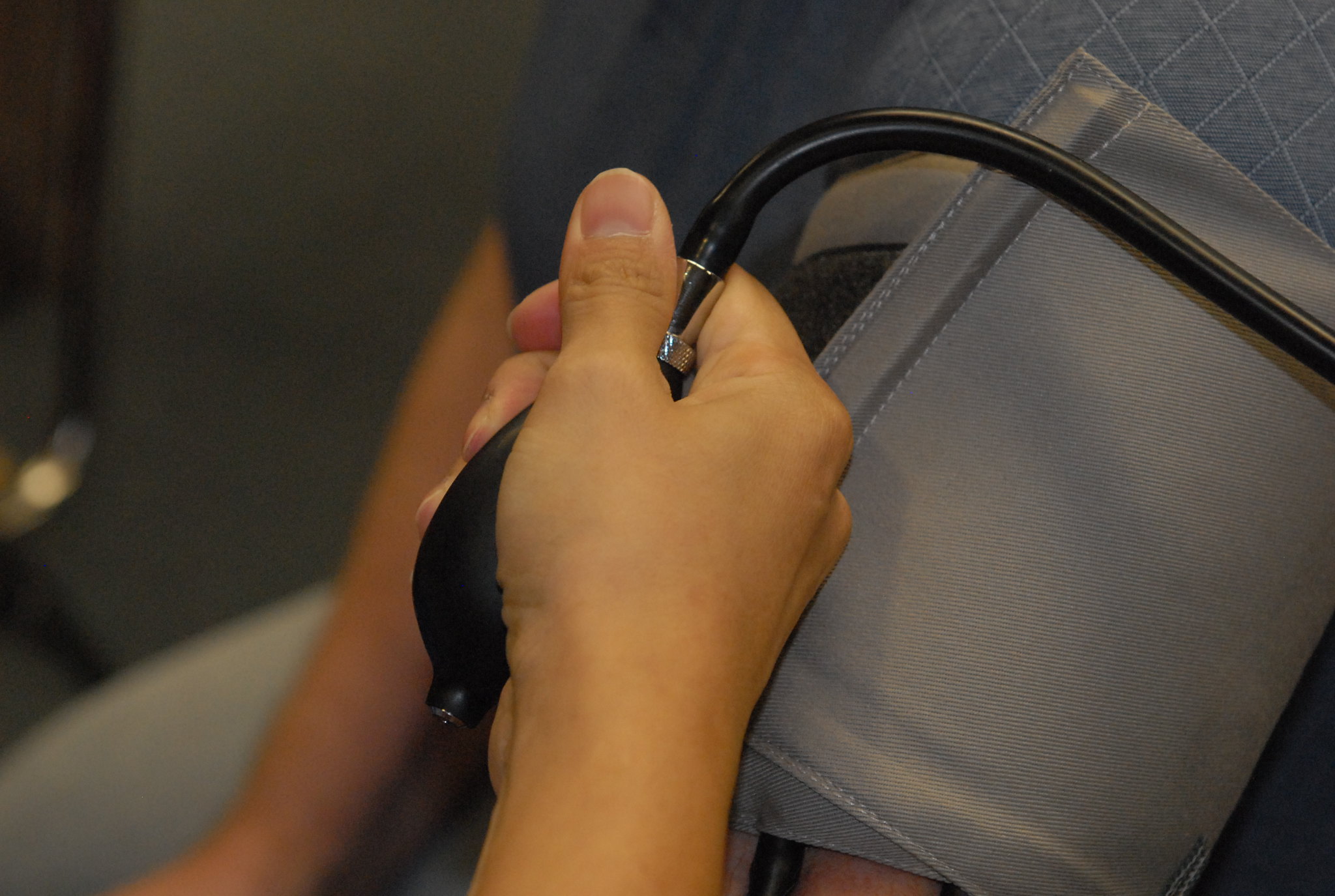It was a warm summer day in July, and I felt trepidation as I prepared to meet my very first patient. This encounter marked my initiation into the world of clinical practice as a budding, first-year medical student. My patient, whom I will refer to as Bob, appeared to be in his late 50s. He was of average height, with a sturdy, muscular build and a distinguished touch of gray lining his temples. His eyes were framed by glasses that conveyed warmth even from behind their lenses.
Bob was not an actual patient but a standardized patient (SP) — an individual who has been trained to simulate real patient scenarios. SP encounters are an important component of the medical education curriculum; they serve as a training tool for teaching and assessing examination skills of fledgling medical students. The encounter that day focused on mastering the basics of a physical examination beginning with the manual measurement of blood pressure.
I found myself in a group with two other first-year students, one faculty member and Bob, the SP. I watched my classmates and soon-to-be friends confidently take their turns at placing the blood pressure cuff around Bob’s arm and practicing how to measure his blood pressure. Despite pouring through my Bates’ Guide to Physical Examination and History Taking textbook and scouring YouTube videos on blood pressure, I had never actually taken a person’s blood pressure before — manually or otherwise.
When it finally became my turn to practice, I felt a surge of panic threaten to overwhelm me as I tried to recall the steps of the procedure. I faltered at locating Bob’s radial pulse, fumbled with the direction of the cuff placement, managed to over-inflate the cuff multiple times, and struggled to hear the first and fifth Korotkoff sounds. Even the seemingly straightforward act of donning my brand new Littmann stethoscope proved to be an ordeal.
After what felt like an eternity of stumbling, I managed to obtain Bob’s blood pressure. The whole situation was a mess, and I worried that I had embarrassed myself in front of my peers, preceptor and Bob, who chose that moment to share conversationally that it was his first day as an SP. I wondered if I could ever be a good physician to my future patients after failing miserably at a basic part of a physical examination.
However, it was only after receiving constructive feedback from the faculty and Bob that I realized my fears had been blown out of proportion. The supportive words from my peers, who shared their own awkward attempts at obtaining Bob’s blood pressure, served as a reassuring reminder that we were all on this journey together. My preceptor, a stranger until that moment, offered a fist bump of solidarity, and even Bob gave me an encouraging smile, saying, “You’re doing great, future doc.”
In the aftermath of that experience, I was reminded of the winding path of my journey to medical school — from uprooting my life in another country as a teen to the relentless grind of my pre-med years in the United States. I thought of the two medical school application cycles that took more out of me than I was willing to give, with each setback and rejection making me question my uncertain future as a physician.
On the day I received the acceptance call from my medical school, I was working in a research lab a thousand miles away. It was probably one of the best days of my life, brimming with joy, gratitude and a profound sense of relief that years of tireless effort had finally paid off. After four years of college and two gap years, I was on the way to achieving my dream profession. Yet, as I stood among my peers during orientation week, donning the symbolic white coat that signified my entry into the medical profession, imposter syndrome bore down on me. I felt it during my white coat ceremony and I felt it a few short weeks later in that room with Bob.
Having completed my first year of medical school, I have come to realize that tasks once daunting, like taking a blood pressure measurement, now feel like second nature with time and practice. To the incoming first-year medical student, I offer this advice: the path to becoming a physician is riddled with fumbles and challenges. I encourage you to persist despite setbacks, as they will undoubtedly occur, whether they are as small as not knowing how to take a blood pressure or more significant hurdles.
The life of a medical student is a rollercoaster of ups and downs, and is a learning curve in itself. Remember in moments of failure, uncertainty and vulnerability that these are not signs of weakness, but rather should be embraced as catalysts for growth. So, take a deep breath, exhale and remind yourself — you’ve got this. And if ever doubt creeps in, recall the words of Bob, the SP: “You’re doing great, future doc.”
Image credit: Blood Pressure Check (CC BY-NC-ND 2.0) by U.S. Army Korea (Historical Image Archive)

